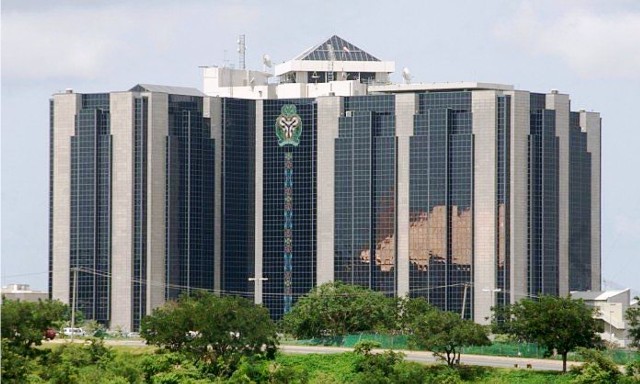Opinion
Cautious Optimism As Naira Rebounds

It has been good news since the past three weeks as our national currency, the Naira, continues to regain its lost value. The recovery follows frantic efforts by a government whose ill-advised, inaugural policies had set the legal tender, and the whole economy, tumbling.
The naira took an unprecedented plunge from last June and hit bottoms by the middle of March, 2024, following a hasty decision by President Ahmed Tinubu’s administration, to let it float freely on the market forces of demand and supply, in addition to removing petroleum subsidy, in disregard of the handicap of Nigeria’s import-dependence.
Without provisions to boost productions that satisfy domestic demands, or prime export capacities to balance import pressures on the local currency, a floating naira depreciated by 25 per cent in a single day in June, 2023, dropping to N1,950 per dollar in March, 2024, from about N750 per dollar earlier in May, 2023, while the price of petrol jumped overnight to 295 per cent, from N189 to N557. By December, 2023 overall inflation, according to official estimates, reached 28.92 per cent and food inflation shot beyond 33.33 per cent.
According to a World Bank report, whereas about 24 million Nigerians crossed the poverty line during the first half of 2023, in the twilight of the Buhari administration, situations got worse by the end of 2023, when accelerating inflations ushered-in by Tinubu’s hasty policies, pushed 63 per cent of Nigerians (about 133 million) into multi-dimensional poverty.
By the first quarter of 2024 hardships drove restive youths to near-uprising, which forced government into another haste – a concoction of palliatives – ironically, a form of subsidy, which it had earlier denounced as government wastefulness.
With the naira regaining its losses, it appears a panicky government has finally groped unto a solution. But if Mr President’s men are remorseful for the havoc done to Nigerians, they should be more sober this time in their computations to avoid distressing the country further.
The Federal Government has resorted to offloading dollar raised from sovereign bonds (in essence, loans), petroleum export proceeds and drawdowns from the external reserves, into the economy to reduce Foreign Exchange (FX) supply pressures, and to help it buy time in the hope of finding solutions to the wider unfavourable economic fundamentals bedevilling the economy.
On the dollar demand side, government has freed-up official restrictions that it believes created artificial scarcities that favour the black market. The Central Bank of Nigeria (CBN) has also cleared-off a backlog of FX obligations to assure investors, lifted the ban on sale of dollar to Bureau De Change Operators (BDCs), clamped down on currency speculators, closed down Binance, a crypto platform government accused of opaque dealings with money launderers, and borrowed dollar through short-term, sovereign bonds to ‘defend’ the naira.
Ever since, the CBN has offloaded dollar to BDCs at progressively reduced rates in the hope of prompting currency hoarders to cut losses and release supposed stockpiles. But in a clime where looted funds are desperately exchanged and exported, not much may be squeezed from hoarders, if surveillance is not stepped up. However, as at April 8, 2024, the CBN has offloaded a second tranche of $10,000 per BDC operator at N1,101 per dollar with a charge not to sell above 1.5 per cent margin. Many predict the CBN would offer the dollar below N1,000 in the coming weeks.
But for how long can the CBN go on with its bonanza to ‘defend the Naira’? And what has been the cost of that defence? While the impact of a strengthening naira is yet to reflect on commodity prices in Nigeria, the nation’s foreign reserve has dropped within 18 days by $0.95billion, down from $34.45billion on March 18, 2024, to N33.50billion on April 3, which represents a daily average depletion rate of $52.78 million. This is despite the $3billion loan from the AFREXIMBANK and petro-dollar revenues also thrown into the fray. To sustain its strengths, reports say the federal government plans to take stabilisation loans by June, 2024, speculated at a tune of $15billion, through the issuance of domestic bonds denominated in foreign currency. FG seeks the loans within the window of short-term, volatile Foreign Portfolio Investment (FPI) bonds which may disappoint the country in times of crises, as against Foreign Direct Investments which are more reliable. According to Bloomberg reports, FG has contacted investment banks, JP Morgan Chase & Co, Goldman Sachs and Citibank NA, for advice on Eurobonds, but Nigeria’s Debt Management Office denies Federal Executive Council’s approvals for such.
Certainly, a stronger currency is beneficial to an import-dependent nation like Nigeria, but without strengthening national productivity to generate surpluses for trade-balancing exports, the pursuit of merely high currency valuation becomes a vain strategy. While the naira strengthens, the reality of the adverse economic fundamentals that erode its worth remains unchanged, implying that its buoyancy rides merely on costly FX floods being pumped by the CBN. It is easy to guess the result should the CBN halt supply.
For years, Nigeria relied on its petroleum sector which at present provides about 78 per cent of FX earnings, but constitutes far less than 10 per cent of its real Gross Domestic Product (GDP), implying that to stabilise, Nigeria needs to grow its non-oil sector of over 90 per cent of GDP. Even the petroleum revenue is endangered by sabotage, illegal bunkering, dwindling investments and insecurity.
The FG may have taken the bet that sustaining the naira could buy it time from hard-pressed Nigerians, in the hope that a number of tangible local productions might kick-off. Notable among the expectations is the Dangote Refinery which, with its 650,000 barrels per day refinning capacity, is expected to satisfy local demands of petroleum products to ease the huge FX demand in that front, and may hopefully earn FX through exports. Already, Dangote’s recent release of 100 million liters of diesel crashed the price of the product from N1,700 to N1,350, with another batch of 100 million liters expected to crash prices further, while the company plans to supply petrol by May, but government-owned refineries which have drained so much resources remain dysfunctional. Again, the recent break through against reprocity flight barriers between the UK and Nigeria by Airpeace, reportedly crashed ticket prices to UK by 60 per cent.
FG may also see reliefs in the successful take-off in Aba, of 24-hour power supply by the Geometric Group and the recent commissioning of 700 Megawatt Zungeru hydro-electricity station, a tomato processing plant in Nassarawa, and a steel mill in Kaduna. However, agricultural, petroleum and manufacturing sectors remain at their lowest and beseiged by insecurity, while the finacial services sector appears to be strong but has incommensurate impact on industrialisation. If government does not encourage productivity in the real economy, its efforts in buoying the naira would be hopeless, while Nigeria falls deeper in debts. Already, as at December 31, 2023, Nigeria’s total debt stood at $106billion, while the 2024 budget of N28.7 trillion projects a deficit of N9.8 trillion to be debt-financed.
When public debt grows fast ahead of GDP growth rate, mounting debt service costs under-cut funds required for investment. That became the plight of Nigeria from Buhari’s era, when from 2016 to 2022 public debt grew by yearly average of 52.4 per cent, and GDP below 2 per cent. In that fateful 2022, debt service cost exceeded government revenue, which is why we are where we are.
The International Monetary Fund projects that Nigeria’s reserve would plummet to $24billion by end of 2024. Meanwhile, a nation’s FX reserve reflects the country’s balance of payments and its ability to settle international obligations. Severe declines in reserve may erode investor confidence and lead to downgrading of its credit ratings, which further worsens the nation’s borrowing costs.
Therefore the current approach towards buoying the Naira through loans cannot be any other thing, but a gamble.
By: Joseph Nwankwor
Opinion
Ndifon’s Verdict and University Power Reform

Opinion
As Nigeria’s Insecurity Rings Alarm

Opinion
The Girl Who Didn’t Dance
-
Business1 day ago
Shippers Council Vows Commitment To Security At Nigerian Ports
-

 Business1 day ago
Business1 day agoNigeria Risks Talents Exodus In Oil And Gas Sector – PENGASSAN
-

 Business1 day ago
Business1 day agoCBN Revises Cash Withdrawal Rules January 2026, Ends Special Authorisation
-
Business1 day ago
NCDMB, Others Task Youths On Skills Acquisition, Peace
-

 Business1 day ago
Business1 day agoFIRS Clarifies New Tax Laws, Debunks Levy Misconceptions
-

 News1 day ago
News1 day agoTinubu Swears In Christopher Musa As Defence Minister
-

 online games2 days ago
online games2 days agoHow Pocket Option Works: A Complete Beginner’s Guide
-

 Women1 day ago
Women1 day agoRIVERS NAWOJ AND PHACCIMA PARTNER TO STRENGTHEN MUTUAL GOALS

